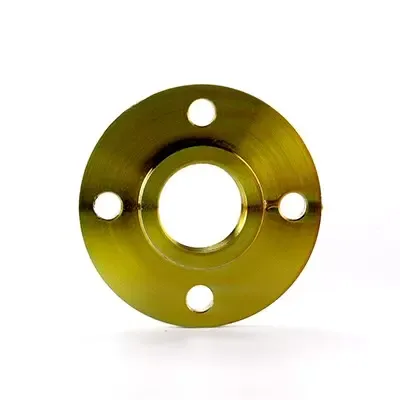-
Cangzhou Yulong Steel Co., Ltd.
-
Phone:
+86 13303177267 -
Email:
admin@ylsteelfittings.com
- English
- Arabic
- Italian
- Spanish
- Portuguese
- German
- kazakh
- Persian
- Greek
- French
- Russian
- Polish
- Thai
- Indonesian
- Vietnamese
- Zulu
- Korean
- Uzbek
- Hindi
- Serbian
- Malay
- Ukrainian
- Gujarati
- Haitian Creole
- hausa
- hawaiian
- Hebrew
- Miao
- Hungarian
- Icelandic
- igbo
- irish
- Japanese
- Javanese
- Kannada
- Khmer
- Rwandese
- Afrikaans
- Albanian
- Amharic
- Armenian
- Azerbaijani
- Basque
- Belarusian
- Bengali
- Bosnian
- Bulgarian
- Catalan
- Cebuano
- China
- China (Taiwan)
- Corsican
- Croatian
- Czech
- Danish
- Esperanto
- Estonian
- Finnish
- Frisian
- Galician
- Georgian
- Kurdish
- Kyrgyz
- Lao
- Latin
- Latvian
- Lithuanian
- Luxembourgish
- Macedonian
- Malgashi
- Malayalam
- Maltese
- Maori
- Marathi
- Mongolian
- Myanmar
- Nepali
- Norwegian
- Norwegian
- Occitan
- Pashto
- Dutch
- Punjabi
- Romanian
- Samoan
- Scottish Gaelic
- Sesotho
- Shona
- Sindhi
- Sinhala
- Slovak
- Slovenian
- Somali
- Sundanese
- Swahili
- Swedish
- Tagalog
- Tajik
- Tamil
- Tatar
- Telugu
- Turkish
- Turkmen
- Urdu
- Uighur
- Welsh
- Bantu
- Yiddish
- Yoruba

Јул . 30, 2024 10:53 Back to list
Exploring the Importance and Applications of 1% Blind Flanges in Industrial Piping Systems
Understanding Blind Flanges A Comprehensive Overview
Blind flanges are essential components in various piping systems, serving a crucial role in industrial applications, particularly in the oil, gas, and water supply industries. As the name suggests, a blind flange is a flat piece of metal used to seal the end of a pipe or pressure vessel. Unlike standard flanges, which are designed to connect two sections of piping, blind flanges do not have a central hole and are used solely for closure.
Construction and Materials
Blind flanges are typically constructed from a variety of materials, including carbon steel, stainless steel, and alloy steel, depending on the specific requirements of the application. Stainless steel blind flanges are particularly popular in corrosive environments due to their resistance to rust and oxidation. In addition to the material, blind flanges can be manufactured in various sizes and pressure ratings, ensuring compatibility with a wide range of piping systems.
Types and Standards
There are several standards for blind flanges, including ASME B16.5 and B16.47, which provide guidelines on dimensions, tolerances, and materials. These standards ensure that the flanges fit correctly and can handle the required pressure and temperature conditions. Moreover, blind flanges come in raised face, flat face, and ring type joint configurations. The choice of type often depends on the specific requirements of the piping system and the conditions under which it operates.
Importance in Piping Systems
1 blind flange

One of the primary purposes of blind flanges is to provide a means of safely isolating sections of a pipeline during maintenance or repairs. By sealing the end of a pipeline, blind flanges prevent leakage and maintain pressure within the system. This isolation is not only critical for the safety of the plant but also crucial for operational efficiency. When it comes time for maintenance, blind flanges allow for the complete drainage of sections of the system, minimizing potential hazards.
Blind flanges are also essential in testing and inspection processes. In hydrostatic testing, for instance, blind flanges can be used to seal off sections of piping to ensure that there are no leaks. This testing is vital for maintaining the integrity of the piping system and ensuring safety standards are met before the system is put into service.
Installation and Handling
Installing a blind flange usually requires careful attention to the torque specifications provided by the manufacturer. Proper installation is essential to avoid leaks and ensure that the flange can withstand the operational pressures. Additionally, gaskets are commonly used in conjunction with blind flanges to provide a tight seal, preventing any potential leakage in high-pressure systems.
Handling blind flanges also requires careful consideration, as improper handling can lead to warping or damage, affecting their performance. It is essential to store flanges in a dry environment to prevent corrosion, particularly for those made of carbon steel or other susceptible materials.
Conclusion
In conclusion, blind flanges play an indispensable role in the maintenance and operation of piping systems across various industries. Their ability to provide a secure seal, facilitate maintenance, and ensure system integrity makes them a vital component in modern engineering. As industries continue to evolve and expand, the demand for reliable and high-quality blind flanges will only increase, underscoring their significance in the world of industrial piping and infrastructure. Understanding their characteristics, applications, and maintenance requirements is key for professionals in the field, ensuring systems operate safely and efficiently.
Latest news
-
ANSI 150P SS304 SO FLANGE
NewsFeb.14,2025
-
ASTM A333GR6 STEEL PIPE
NewsJan.20,2025
-
ANSI B16.5 WELDING NECK FLANGE
NewsJan.15,2026
-
ANSI B16.5 SLIP-ON FLANGE
NewsApr.19,2024
-
SABS 1123 FLANGE
NewsJan.15,2025
-
DIN86044 PLATE FLANGE
NewsApr.19,2024
-
DIN2527 BLIND FLANGE
NewsApr.12,2024
-
JIS B2311 Butt-Welding Fittings LR/SR 45°/90° /180°Seamless/Weld
NewsApr.23,2024











